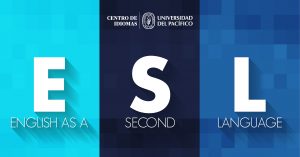At the beginning of each year, teachers must face a big challenge: planning for the whole academic period ahead; that is; we are expected to develop a conceptual framework, determine goals, design a program, and last, but not least important, establish or design assessment procedures. This entire task demands a huge effort. Quite frequently, for better or worse, editorials jump to the rescue lending a hand to teachers and end up playing a guiding role, since they provide this kind of information to them when schools start using a book series.
The question that emerges is: Can a textbook series that has been made to be used in different countries be the right one for our reality, for our students? It is important to consider that each country has its own parameters set up by the ministry or organism in charge of regulating education. Thus, how helpful can a one-size-fits-all yearly plan be? It is important to keep in mind that team decisions should be made about what direction the lessons will follow, and, most importantly, considering the students’ needs, and UGELs and schools’ requirements
 How can we assure efficacy if teachers do not have a say in decision-making policies? Is there an efficient way to alleviate the teacher’s workload that can be beneficial to both: teachers and students?
How can we assure efficacy if teachers do not have a say in decision-making policies? Is there an efficient way to alleviate the teacher’s workload that can be beneficial to both: teachers and students?
Besides this, something that can be really confusing is the terminology as well. Do we have to use the approach of a ESL or EFL instruction program? These two concepts can be very differently perceived.
ESL is technically understood as students with a different mother language, that are studying English in an English speaking country (which is not the case in Peru).
EFL, on the other hand, refers to learning English in nations which are not English speaking countries. However, these are just labels. In Peru, in a bilingual school which has about 80% of the curricula in English, students are given lots of chances to apply cultural and linguistic information; speaking the language most of the day every day of the week, organizing science fairs, recreating different English-speaking countries holidays, to mention a few, in turn will mean practically an ESL approach.
In schools where English is taught just once or twice a week, in a reduced number of hours, the results would also be limited since students will not have any chance to interact with exchange students coming from other countries and will depend exclusively on their teachers’ command of the foreign language, the efficiency of their textbooks and the creativity of the teachers to design their sessions and promote oral practice through a number of activities.
This should be our starting point: a realistic goal considering the tools at our disposal. Hopefully this year we will be able to make the necessary changes without experiencing this planning activity as a heavy burden.










